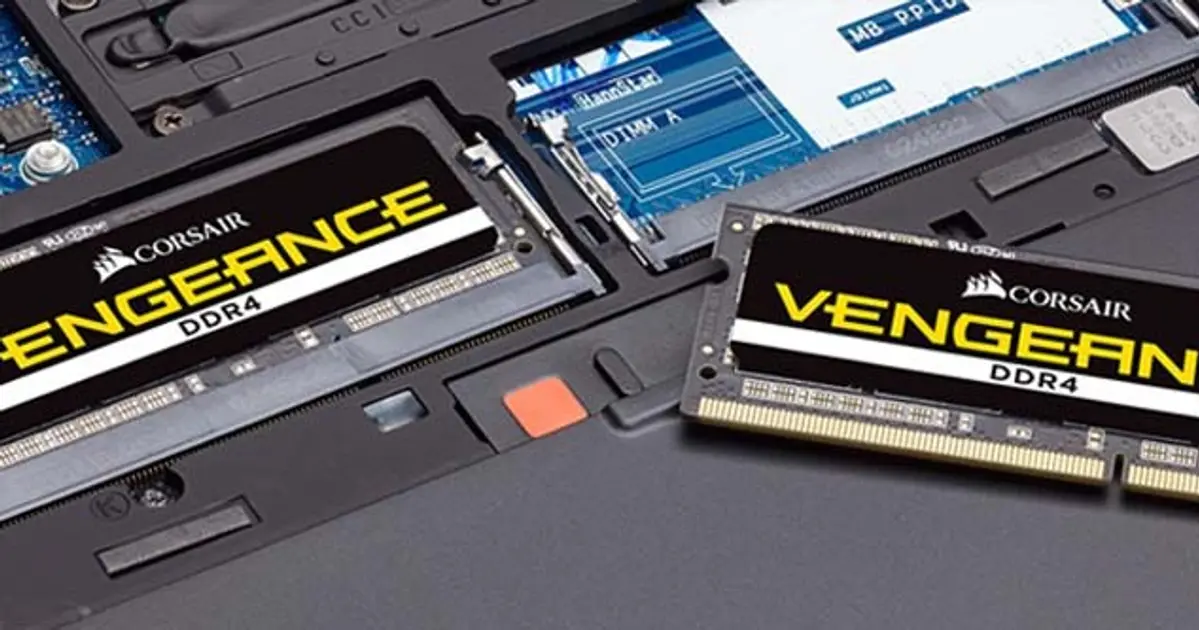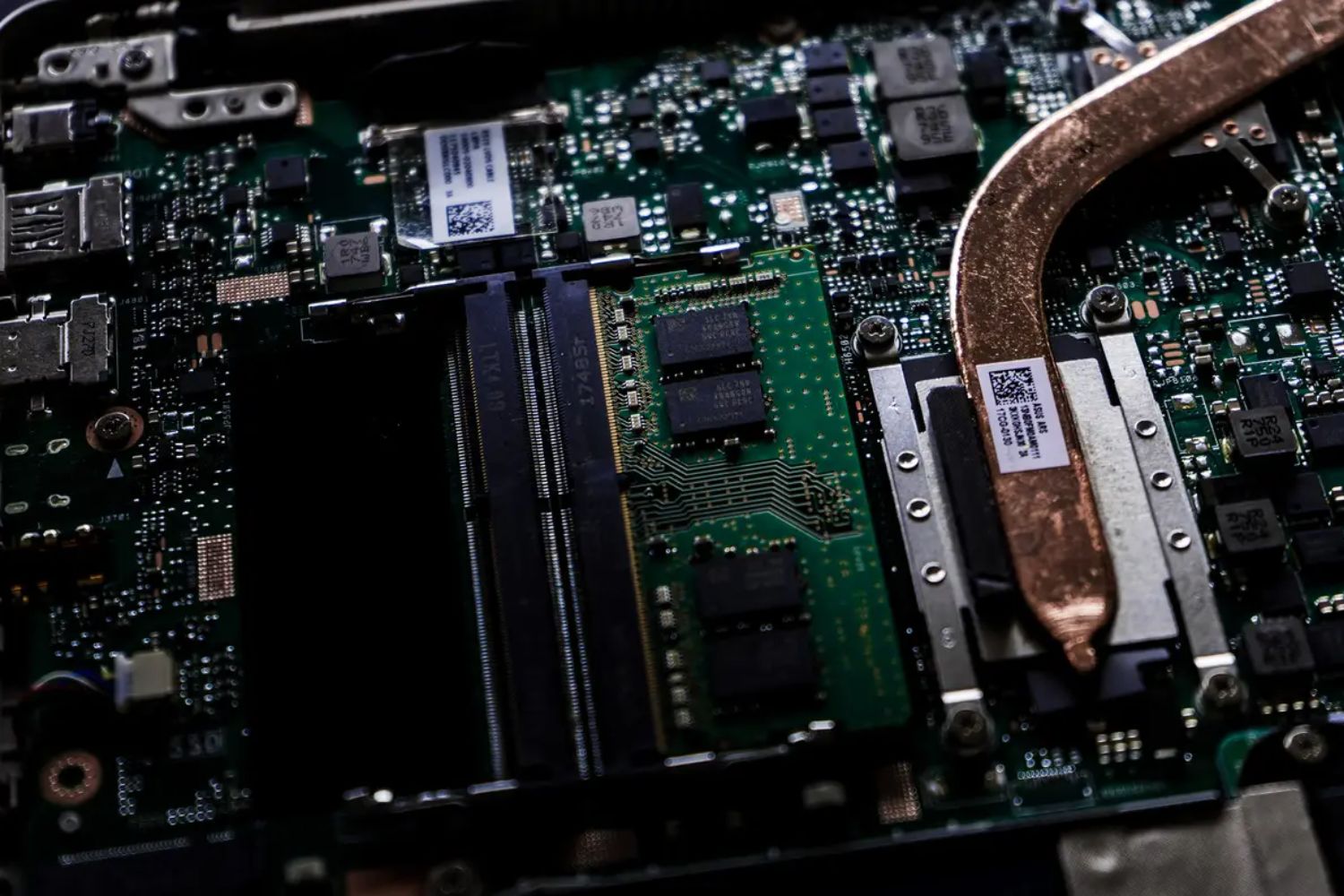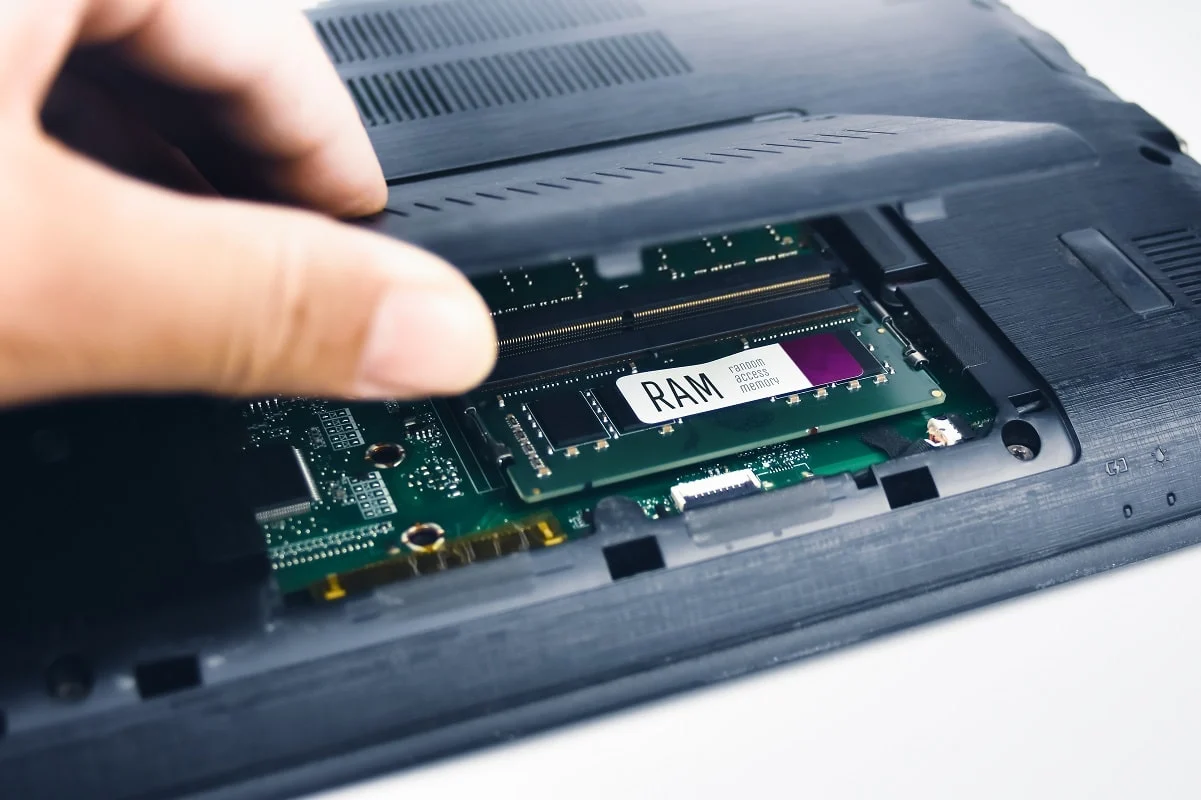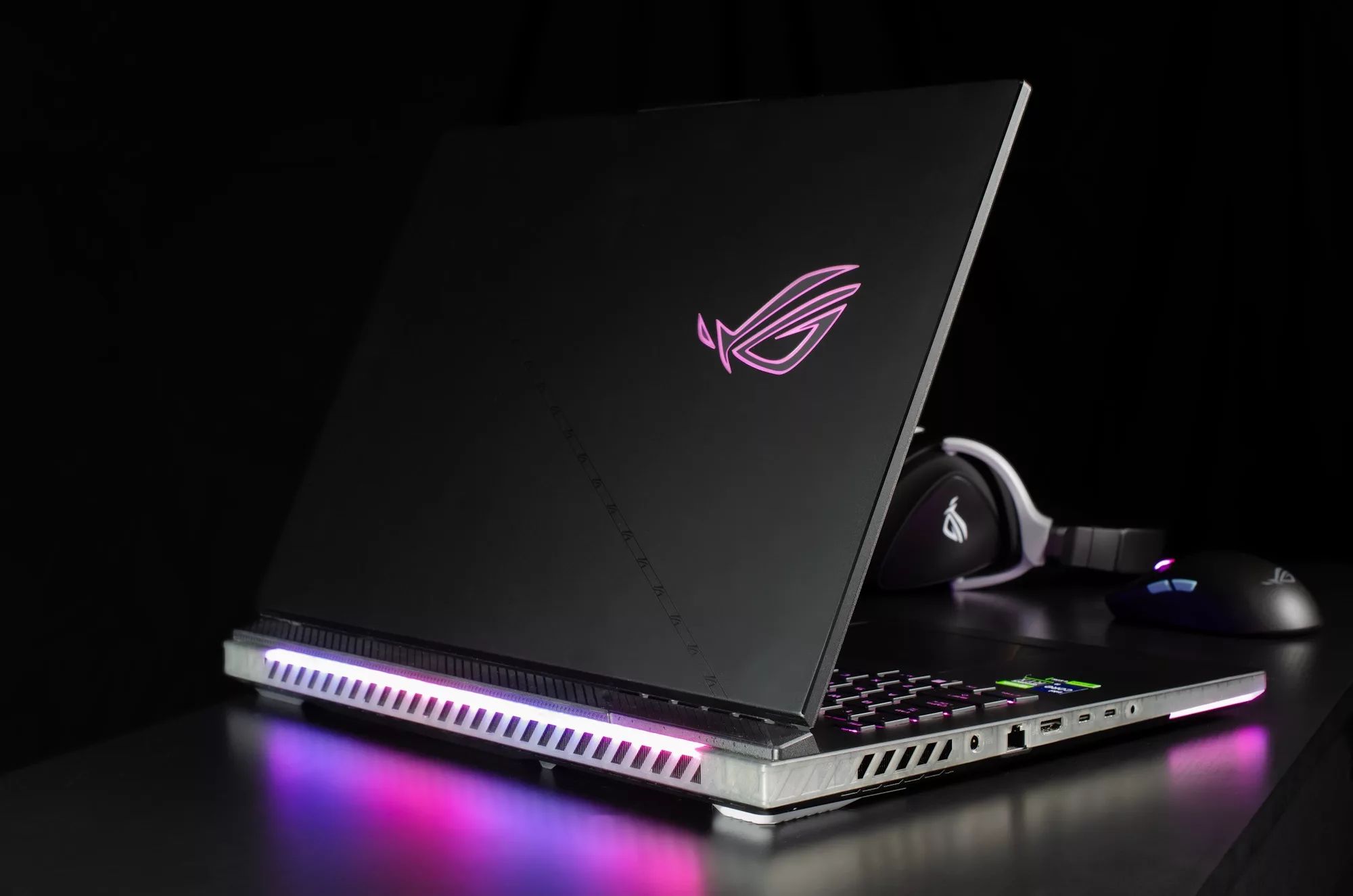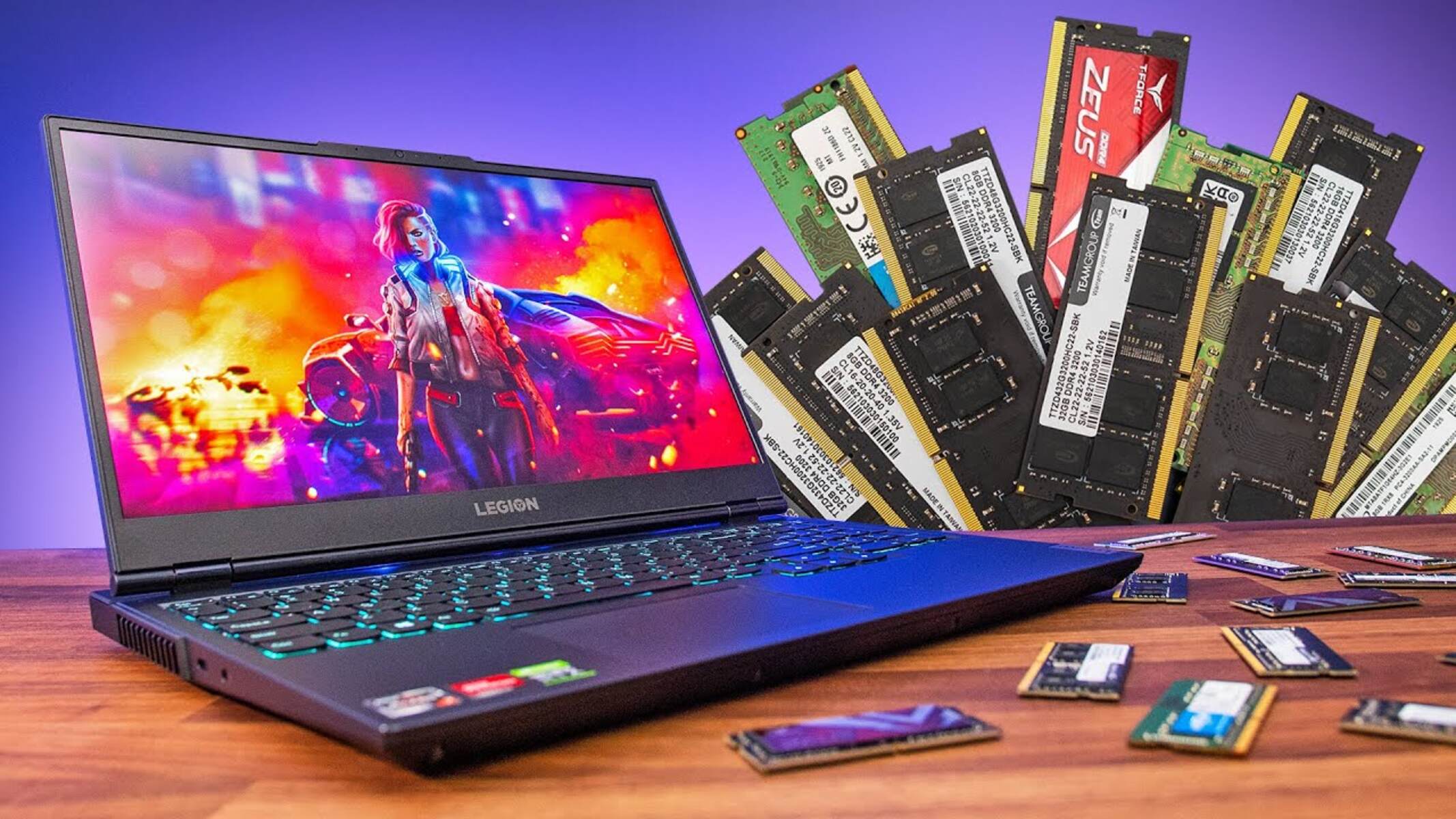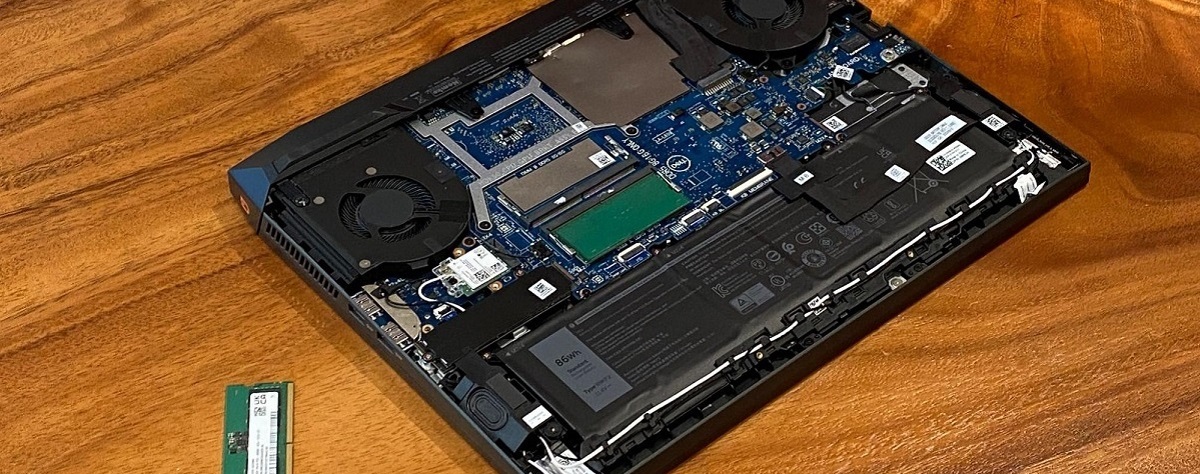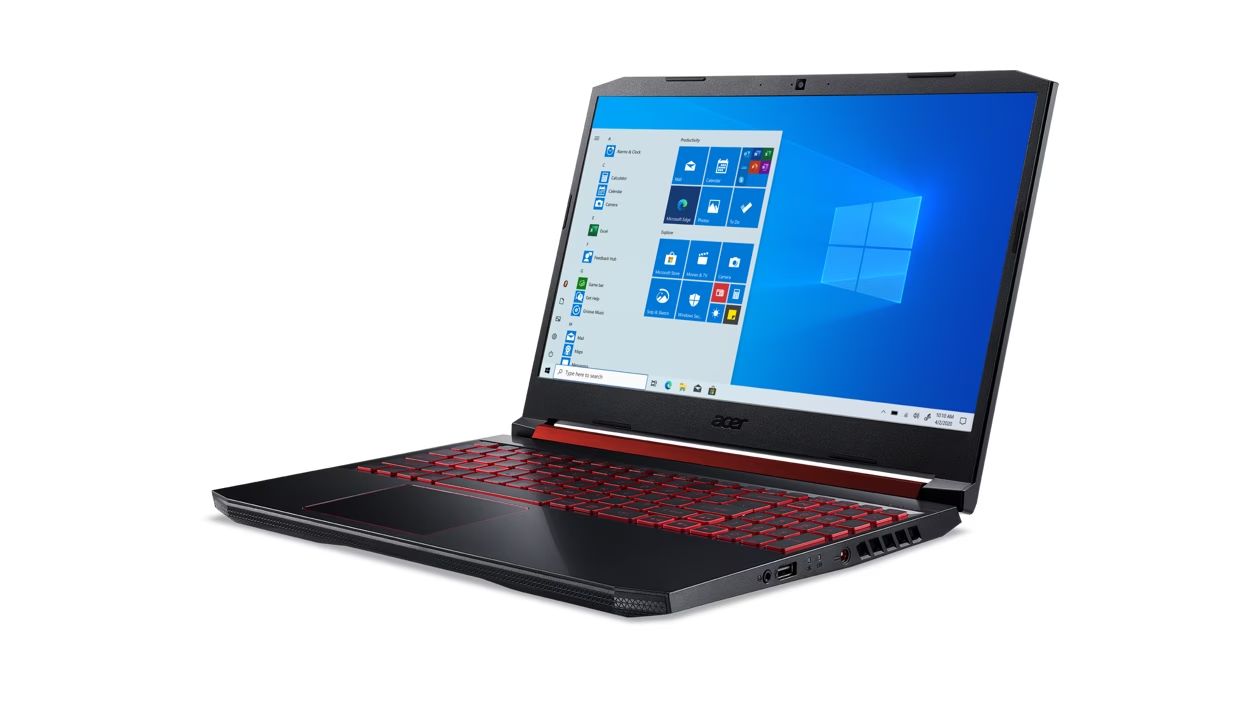Introduction
Welcome to the world of laptops, where technology is constantly advancing, and new features are being introduced every year. When it comes to the performance of a laptop, one crucial factor to consider is the amount of RAM it has. But how much RAM do you really need for your laptop? This is a question that many people ask themselves when making a purchasing decision.
RAM, which stands for Random Access Memory, is a type of computer memory that temporarily stores data that is actively being used by the computer’s software. It is different from the storage space on your hard drive or SSD, as it provides quick access to data that is required for the smooth operation of applications and the overall system performance.
The amount of RAM in a laptop can have a significant impact on its speed and multitasking capabilities. Insufficient RAM can lead to sluggish performance, frequent program crashes, and frustrating delays when switching between applications. On the other hand, having an adequate amount of RAM can enhance the overall user experience by ensuring smooth and responsive performance even when running multiple demanding tasks simultaneously.
When determining how much RAM you need for your laptop, there are several factors to consider. These include the specific tasks you will be performing, the type of applications you will be using, and the operating system requirements. By understanding these factors and making an informed decision, you can ensure that your laptop meets your performance expectations and provides a seamless computing experience.
In this article, we will explore the impact of RAM on laptop performance and discuss the factors to consider when determining the right amount of RAM for your needs. We will also provide some common RAM requirements for different tasks and minimum RAM requirements for various operating systems. Additionally, we will guide you on how to check the amount of RAM on your current laptop and provide insights on upgrading the RAM if necessary.
So, whether you’re a casual user who mainly browses the web and uses productivity apps or a power user who runs resource-intensive software and multitasks extensively, read on to discover how much RAM you really need for your laptop!
What is RAM?
RAM, which stands for Random Access Memory, is a crucial component of a computer’s hardware. It is a type of volatile memory that is used to store data and instructions that are actively being accessed by the computer’s software.
Unlike the long-term storage provided by your hard drive or solid-state drive (SSD), RAM provides temporary storage that allows the computer to quickly access and manipulate data required for its ongoing operations. Think of RAM as a workspace where the computer keeps its tools and resources for immediate use.
When you open an application or launch a program, it gets loaded into RAM, allowing the computer’s processor to quickly access and process the necessary data. The more RAM your computer has, the more data it can store and access simultaneously, resulting in improved performance and responsiveness.
RAM is a crucial component of multitasking. When you have multiple applications running simultaneously, RAM ensures smooth switching between them. Each application requires a certain amount of RAM to function optimally, and insufficient RAM can cause slowdowns, freezing, and potential crashes.
RAM comes in various forms, such as DDR3, DDR4, and LPDDR4, with each generation providing faster speeds and improved efficiency. The capacity of RAM is measured in gigabytes (GB) and commonly ranges from 4GB to 32GB or even higher in high-end systems.
It’s important to note that RAM is a volatile memory, meaning that its contents are lost when the computer is powered off or restarted. This is why it is essential to save your work and data to a non-volatile storage medium, such as a hard drive or SSD, to avoid losing any important information.
In summary, RAM is a vital component of a computer that provides temporary storage for actively accessed data and instructions. It plays a crucial role in multitasking, ensuring smooth performance and responsiveness. The amount of RAM you have in your computer directly impacts its ability to handle multiple tasks simultaneously, so it’s important to consider your specific needs when determining the right amount of RAM for your laptop.
How does RAM affect laptop performance?
The amount of RAM in a laptop has a direct impact on its overall performance. RAM affects how smoothly and efficiently your laptop can handle multiple tasks simultaneously, as well as the speed at which applications and processes can run.
One of the primary ways in which RAM affects performance is by determining the amount of data that can be stored and accessed by the computer’s software at any given time. When you open an application or launch a program, it gets loaded into RAM. The more RAM you have, the more applications and data can be stored in RAM, allowing for seamless multitasking.
Insufficient RAM can result in slower performance and decreased efficiency. When your laptop runs out of available RAM, it compensates by using virtual memory, which involves transferring data from RAM to the hard drive or SSD. Virtual memory is much slower than physical RAM, leading to delays and increased load times for applications.
In addition to multitasking, RAM also affects the speed at which applications and processes run. When an application is running, it may need to temporarily store and access data in RAM. The more RAM available, the faster this data can be accessed, resulting in quicker response times and smoother operation of the application.
RAM also plays a crucial role in gaming and other resource-intensive tasks. Video games, video editing software, and other demanding applications often require a significant amount of RAM to run smoothly. With ample RAM, your laptop can store game assets, render graphics, and load large files without encountering performance issues like lag or stuttering.
It’s worth noting that the impact of RAM on laptop performance can vary depending on other hardware components, such as the processor (CPU) and graphics card (GPU). These components work together to execute tasks and processes efficiently. While RAM is essential for performance, having a powerful CPU and GPU can also enhance overall system performance when paired with ample RAM.
In summary, RAM directly affects laptop performance by determining the amount of data that can be stored and accessed at any given time. Insufficient RAM can lead to slower performance, increased load times, and potential crashes when running multiple applications or resource-intensive tasks. On the other hand, having adequate RAM allows for seamless multitasking, quicker response times, and smoother operation of applications and processes. When considering laptop performance, it’s important to strike a balance between RAM and other hardware components to achieve optimal performance.
Factors to consider when determining how much RAM you need
When determining how much RAM you need for your laptop, there are several factors to consider that can help guide your decision-making process. Understanding these factors will ensure that you select the right amount of RAM that suits your specific needs and enhances your laptop’s performance.
1. Type of tasks: Consider the types of tasks you will be performing on your laptop. If you mainly use your laptop for basic web browsing, email, and word processing, 8GB of RAM is generally sufficient. However, if you engage in more demanding tasks such as video editing, gaming, or running resource-intensive software, you may benefit from 16GB or even 32GB of RAM for optimal performance.
2. Operating system requirements: Different operating systems have specific RAM requirements. For instance, Windows 10 recommends 4GB of RAM for 64-bit systems, but 8GB or more is recommended for better performance. Mac OS X typically requires a minimum of 4GB of RAM, but for seamless multitasking and running demanding applications, 8GB or more is advisable.
3. Future-proofing: Consider future-proofing your laptop by selecting more RAM than you currently need. As software and operating systems become more advanced and require additional resources, having a higher amount of RAM can ensure that your laptop remains capable and responsive in the future.
4. Budget: RAM prices can vary, so it’s crucial to consider your budget when determining how much RAM you need. While it’s tempting to choose the highest amount of RAM available, it’s important to strike a balance between cost and performance. Evaluate your needs and choose a RAM capacity that aligns with your budget without sacrificing functionality.
5. Upgradability: Check if your laptop allows for RAM upgrades. Some laptops have soldered RAM that cannot be upgraded, while others have slots that allow for easy RAM expansion. If your laptop allows for future upgrades, you can start with a lower RAM capacity and upgrade it later if needed.
6. Considering other hardware: Take into account the other hardware components of your laptop, such as the processor (CPU) and graphics card (GPU). If you have a powerful CPU and GPU, they might require more RAM to perform optimally. Ensure that your RAM selection is balanced with the capabilities of the other hardware components.
In summary, determining how much RAM you need for your laptop requires considering factors such as the type of tasks you perform, the RAM requirements of the operating system, future-proofing, budget, upgradability, and the capabilities of other hardware components. By carefully evaluating these factors, you can select the appropriate amount of RAM that ensures optimal performance and enhances your overall computing experience.
Common RAM requirements for different tasks
The amount of RAM you need for your laptop depends on the specific tasks you perform. Different tasks have varying RAM requirements to ensure smooth operation and optimal performance. Here are some common tasks and their corresponding RAM recommendations:
- Basic web browsing and email: For everyday web browsing, email, and light productivity tasks, 4GB to 8GB of RAM should be sufficient. This amount of RAM allows for smooth browsing, opening multiple tabs, and using basic office applications simultaneously.
- Word processing and spreadsheets: If you primarily work with word processing software, spreadsheets, and light multitasking, 8GB of RAM is typically adequate. This amount of RAM enables smooth document editing, data manipulation, and running multiple productivity apps simultaneously.
- Photo editing and graphic design: For photo editing and graphic design software such as Adobe Photoshop or Illustrator, a minimum of 8GB to 16GB of RAM is recommended. These applications can be memory-intensive, and having more RAM allows for better performance when working with large image files and complex designs.
- Video editing and rendering: Video editing and rendering software like Adobe Premiere Pro or DaVinci Resolve benefit from ample RAM. For smooth editing and rendering of high-definition videos, a minimum of 16GB to 32GB of RAM is advisable. More RAM allows for faster processing, seamless playback, and efficient rendering of complex video projects.
- Gaming: Gaming is a resource-intensive task that can benefit from higher amounts of RAM. Generally, 8GB to 16GB of RAM is recommended for casual gaming and running less demanding games. However, for more demanding and graphically intense games, 16GB or more of RAM is preferable to ensure smooth gameplay and minimize the chance of lag or stuttering.
- Virtual machine usage and software development: If you frequently use virtual machines or engage in software development activities, 16GB to 32GB of RAM is highly recommended. Virtual machines require dedicated RAM to run smoothly, and software development tools often require substantial memory for compiling code and running IDEs efficiently.
It’s important to note that these recommendations are general guidelines and the specific RAM requirements may vary depending on the complexity of the task, the size of files being processed, and the specific software being used.
In summary, the common RAM requirements for different tasks are as follows:
- Basic web browsing and email: 4GB to 8GB
- Word processing and spreadsheets: 8GB
- Photo editing and graphic design: 8GB to 16GB
- Video editing and rendering: 16GB to 32GB
- Gaming: 8GB to 16GB (or higher for more demanding games)
- Virtual machine usage and software development: 16GB to 32GB
By considering the nature of your tasks and the recommended RAM requirements, you can choose the appropriate amount of RAM that ensures smooth performance and enhances your overall computing experience.
Minimum RAM requirements for different operating systems
When it comes to determining how much RAM you need for your laptop, it’s essential to consider the minimum RAM requirements specified by the operating system you plan to use. While these minimum requirements provide a baseline for system functionality, it’s often advisable to have more RAM for a smoother and more responsive user experience. Here are the minimum RAM requirements for some popular operating systems:
- Windows: The minimum RAM requirement for Windows operating systems varies depending on the version. Windows 10 recommends a minimum of 4GB of RAM for 64-bit systems, while 8GB or more is recommended for better performance. Older versions, such as Windows 7, have lower minimum requirements, typically around 1GB to 2GB of RAM, but these versions are becoming outdated and may not fully support newer software and applications.
- macOS: macOS typically has higher minimum RAM requirements compared to Windows. The minimum RAM requirement for macOS can range from 4GB to 8GB, depending on the version. Apple often recommends at least 8GB of RAM for optimal performance, especially when running resource-intensive applications.
- Linux: Linux distributions vary widely, and their minimum RAM requirements can differ depending on the specific distribution and the desktop environment being used. Generally, Linux distributions can run on systems with as little as 512MB to 1GB of RAM for basic usage. However, for smoother multitasking and running more resource-intensive applications, a minimum of 2GB to 4GB of RAM is typically recommended.
- Chrome OS: Chrome OS is designed to run efficiently on relatively low-spec hardware. The minimum RAM requirement for Chromebooks, which run Chrome OS, is usually around 4GB. However, having 8GB of RAM can provide a better experience, especially when working with multiple browser tabs or running Android applications on Chrome OS.
It’s important to note that while these are the minimum RAM requirements, they do not indicate the ideal amount of RAM for optimal performance. To ensure a smooth and responsive computing experience, it’s often recommended to have more RAM than the minimum requirements specified by the operating system.
Furthermore, keep in mind that these minimum requirements can vary depending on the specific software and applications you plan to use. For example, running resource-intensive software such as video editing tools or virtual machines on any operating system may require significantly more RAM than the specified minimums.
In summary, the minimum RAM requirements for popular operating systems are as follows:
- Windows: 4GB (recommended 8GB or more)
- macOS: 4GB to 8GB (recommended 8GB or more)
- Linux: 2GB to 4GB
- Chrome OS: 4GB (recommended 8GB for better performance)
Considering the minimum RAM requirements for your chosen operating system, as well as your specific usage scenarios, can help you determine the appropriate amount of RAM to ensure optimal performance and a seamless computing experience.
How to check the amount of RAM on your current laptop
If you’re unsure about the amount of RAM installed in your laptop, there are several ways to check it. Here are a few methods:
1. System Information: On Windows, you can use the built-in System Information tool to check your laptop’s RAM. Simply press the Windows key + R to open the Run dialog box, type “msinfo32” (without quotes), and hit Enter. This will open the System Information window, where you can find detailed information about your laptop’s hardware, including the installed RAM.
2. Task Manager: On both Windows and macOS, you can use the Task Manager (Windows) or Activity Monitor (macOS) to get a quick glimpse of your laptop’s RAM usage. To open the Task Manager on Windows, press Ctrl + Shift + Esc. On macOS, press Command + Space to open Spotlight Search, type “Activity Monitor,” and hit Enter. The Task Manager or Activity Monitor will display the current memory usage along with other system performance metrics.
3. Control Panel or Settings: On Windows, you can navigate to the Control Panel and open the “System” or “System and Security” settings. Here, you will find the details of your laptop’s hardware configuration, including the amount of installed RAM. On macOS, click on the Apple menu, select “About This Mac,” and click on the “Memory” tab to view the installed RAM size.
4. Third-party software: There are various third-party software programs available that provide more detailed information about your laptop’s hardware, including the RAM. Speccy, CPU-Z, and HWiNFO are examples of popular utilities that can provide extensive hardware information, including the installed RAM capacity, type, and speed. These tools are often free to download and straightforward to use.
Once you have determined the amount of RAM installed in your laptop, you can assess whether it meets your needs or if an upgrade may be beneficial. If you find that your laptop’s RAM is insufficient for your usage requirements, and you have the ability to upgrade the RAM, you may consider adding more memory to improve your laptop’s performance and multitasking capabilities.
Remember to refer to your laptop’s manufacturer or consult your laptop’s manual or support resources to ensure compatibility and follow proper installation procedures when upgrading the RAM.
In summary, there are several methods for checking the amount of RAM installed in your laptop. You can use the System Information tool, Task Manager or Activity Monitor, Control Panel or Settings, or third-party software to easily determine the capacity of your laptop’s RAM. Once you have this information, you can assess whether upgrading the RAM is necessary to meet your specific needs.
Upgrading the RAM on your laptop
If you find that the installed RAM in your laptop is insufficient for your usage needs, upgrading the RAM can be a viable solution to improve your laptop’s performance and multitasking capabilities. Here are the steps to upgrade the RAM on your laptop:
1. Determine compatibility: Before purchasing new RAM modules, it is essential to ensure compatibility with your laptop. Check the laptop’s manual or manufacturer’s website for information about the maximum supported RAM capacity, type, and speed. Additionally, consider the number of available memory slots and any specific requirements for dual-channel memory configurations.
2. Gather the necessary tools: You’ll typically need a screwdriver (often a Phillips-head), an antistatic wrist strap (to prevent static electricity damage), and an old towel or static-free surface to work on.
3. Power off and disconnect: Make sure your laptop is powered off and disconnected from the power source before proceeding with any internal hardware modifications. This ensures your safety and prevents damage to the laptop or components.
4. Locate the RAM slots: As laptops vary in design, the specific location of the RAM slots may differ. Refer to your laptop’s manual or manufacturer’s website for guidance. In many cases, the RAM slots are located under a removable panel on the underside of the laptop.
5. Remove existing RAM (if applicable): If there are any existing RAM modules that you wish to replace or upgrade, carefully release the retention clips on either side of the module, and gently remove it from the slot at an angle. Be cautious not to use excessive force or touch the gold contacts of the module.
6. Install the new RAM modules: Align the notch on the bottom edge of the new RAM module(s) with the notch in the slot. Insert the module(s) at a 45-degree angle and gently press it down until the retention clips lock into place. Ensure that the module is fully seated and secured.
7. Replace the cover: If you had to remove a panel to access the RAM slots, carefully reattach it and secure it with the appropriate screws. Ensure that everything is properly aligned and tightened.
8. Power on and verify: Once the RAM upgrade is complete, reconnect the power source, power on your laptop, and check if the RAM upgrade was successful. You can verify this by checking the amount of RAM recognized in the operating system, using the methods mentioned in the previous section.
It is worth noting that not all laptops have user-upgradable RAM, as some models may have soldered RAM or other restrictions. In such cases, upgrading the RAM may not be feasible or may require professional assistance.
If you are unsure about the RAM upgrade process or feel uncomfortable performing it yourself, it is recommended to consult a professional technician or contact the laptop manufacturer’s support for guidance.
In summary, upgrading the RAM on your laptop can significantly improve its performance and multitasking capabilities. By ensuring compatibility, gathering the necessary tools, following the proper steps to remove and install the RAM modules, and verifying the upgrade, you can successfully enhance your laptop’s RAM capacity and optimize its performance for your specific needs.
Conclusion
RAM is an integral component of a laptop that directly impacts its performance and multitasking capabilities. Determining how much RAM you need for your laptop requires careful consideration of various factors, including the specific tasks you perform, the operating system requirements, future-proofing, budget, upgradability, and the capabilities of other hardware components. By selecting the right amount of RAM, you can ensure optimal performance and enhance your overall computing experience.
We explored the importance of RAM in laptop performance and discussed how it affects the speed of applications, multitasking capabilities, and overall responsiveness. Additionally, we looked at common RAM requirements for different tasks, such as web browsing, photo editing, video editing, gaming, and software development. Understanding the RAM requirements specific to your tasks helps you make an informed decision about the amount of RAM you need for your laptop.
We also discussed the minimum RAM requirements for popular operating systems like Windows, macOS, Linux, and Chrome OS. While these minimum requirements provide a baseline, it’s often advisable to have more RAM for better performance and to accommodate resource-intensive applications.
If you’re unsure about the amount of RAM installed in your laptop, we provided various methods to check it, including using system information tools, task managers, control panel or settings, and third-party software. By knowing your current RAM capacity, you can determine whether an upgrade is necessary to meet your specific needs.
If upgrading the RAM is required, we outlined the steps involved in the process, such as determining compatibility, gathering the necessary tools, locating the RAM slots, removing existing RAM (if applicable), installing new RAM modules, and verifying the upgrade. However, it’s important to note that not all laptops have user-upgradable RAM, so it’s crucial to check the laptop’s manual or manufacturer’s website to ensure upgradability.
In conclusion, understanding the impact of RAM on laptop performance and considering factors such as task requirements, operating system requirements, and potential RAM upgrades can help you make an informed decision when determining how much RAM you need for your laptop. By selecting the appropriate amount of RAM, you can optimize performance, enhance multitasking capabilities, and ensure a smooth and enjoyable computing experience.







